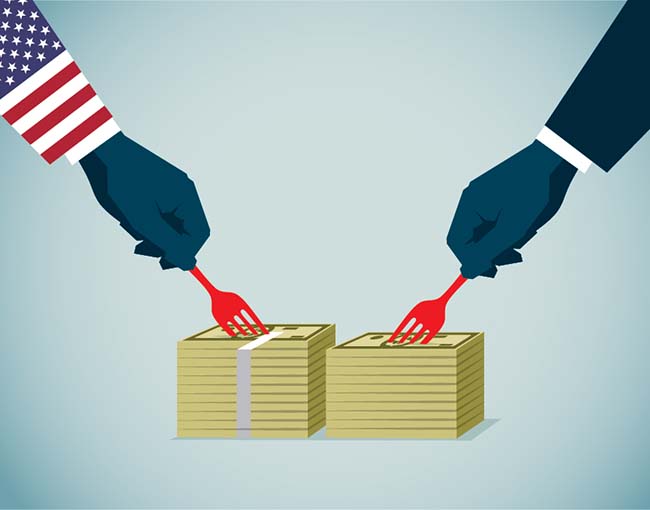Steps utilized by the U.S. Secretary of the Treasury to ensure that expenditures of the federal government stay under the congressionally mandated debt limit.
Proud Mary
The Constitution provides Congress the power of the purse, which includes the authority to borrow money on behalf of the federal government. Congress imposed the debt limit in 1917 as an additional control on federal spending. The debt limit is a statutory cap on the total debt held by the U.S. Treasury. Once noncontroversial, raising the debt limit has grown increasingly political in recent years. Fears that Congress would not increase the debt limit even led to a lowering of the U.S. credit rating in 2011. The Bipartisan Budget Act of 2015 temporarily suspended the debt limit for two years and raised the cap to its current level of $19.8 trillion, effective March 16, 2017.
What's Love Got to Do With It
Measuring when the debt limit will be reached can be difficult for the U.S. Treasury due to constantly shifting expenditures and inconsistent tax revenue. Treasury Secretary Mnuchin notified Congress in March that he had begun undertaking extraordinary measures to keep total U.S. debt under the debt limit. Mnuchin provided details on what those extraordinary measures actually are, including suspending new investments in pension programs and reinvestment in other federal funds as well as stopping the sale of certain federally-owned securities. He also noted that, for technical reasons, certain extraordinary measures available to previous administrations are no longer viable options. Secretary Mnuchin notified Speaker Ryan last week that the U.S. Treasury will hit the debt limit on September 29.
Though it is unclear what would happen if the debt limit is reached, the general consensus is that the result could be catastrophic to the U.S. and global economies. With borrowing prohibited, the Treasury would have to operate the federal government using only incoming tax revenue. The Obama Administration drafted a "secret" contingency plan to prioritize certain expenditures and delay others if the debt limit were reached. Social Security payments, veterans benefits, and payments to holders of U.S. debt would get priority under that plan. The Treasury's remaining obligations, including federal employee salaries and payments to government contractors, would be delayed. Secretary Mnuchin has said that debt prioritization is not currently an option he is considering.
Better Be Good to Me
With the House now in recess, the earliest Congress could increase the debt ceiling is in September. The Trump Administration has proposed a $2.5 trillion increase to the debt limit. Within the Trump Administration, however, Secretary Mnuchin and Office of Management and Budget Director Mulvaney disagree about whether budget cuts should accompany the increase. During the Obama Administration, conservative Republicans typically insisted on spending cuts in return for debt limit increases. Though the health care debate consumed most of Congress's time this summer, expect to hear a lot about the looming fiscal cliff after Labor Day, with the debt limit set to be hit on September 29 and federal appropriations running out on September 30.





